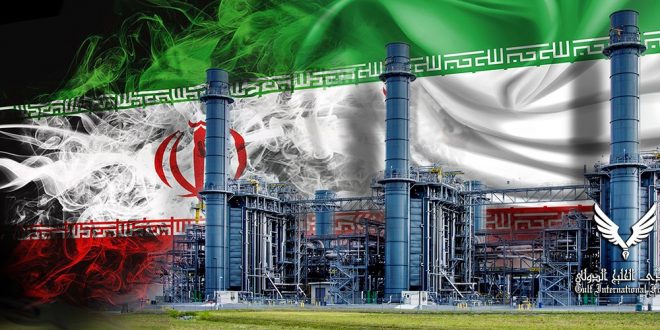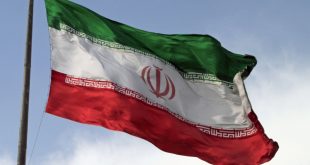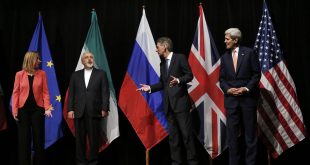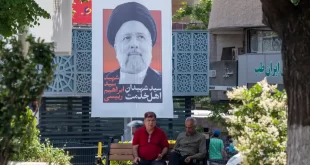Beset by an unprecedented domestic energy crisis, Iran has sought to cement foreign energy deals and investment, to varied success.
Though the country faces a raft of international sanctions and several major geopolitical hurdles, Iran’s oil and gas sector has seen a significant expansion in recent months—a period of growth marked by new energy deals with foreign partners, rising output, and the discovery of newly unexplored reserves. Iran has aggressively pursued new energy ties to its neighbors, including Turkey, Iraq, and Russia, while simultaneously investing in domestic oil and gas projects to boost output and exports.
It is critical to understand the elaborate dynamics of Iran’s oil and gas sector, given the convergence of business interests, political dynamics, and global energy demands in the region. According to Iranian officials, these developments have also come against the backdrop of ongoing international sanctions and geopolitical tensions, which have historically hampered Iran’s oil sector’s expansion.
The Status of Iran’s Hydrocarbon Sector
The Iranian oil and gas sector’s position reflects the recent progress made by the Islamic Republic across several domains. Groundbreaking energy agreements with foreign partners, rising output, and newly discovered hydrocarbon reserves suggest a promising future. Despite Western sanctions, the Iranian government recently signed billion-dollar contracts with local firms to increase oil output by as much as 350,000 barrels per day (bpd). The Iranian government is also attempting to map out its massive natural gas deposits, as evidenced by the recent discovery of reserves in southern Iran.
Credible estimates suggest that Iran’s oil production capacity reached 3.6 million bpd in March 2024—a significant increase over the 2.54 million bpd average in 2022. Iran’s long-term projections suggest that the Islamic Republic can sustain production levels of 3.8 million bpd. Iran also produces 1.07 billion cubic meters of gas per day, with ambitions to increase this figure to 1.3 billion within five years, according to Iranian Oil Minister Javad Owji.
Main Challenges in Iran Energy Industry
To succeed, Iran’s energy industry must confront several severe challenges, including natural gas shortages and financial restraints that impede renewable energy initiatives. Despite its enormous gas reserves, Iran faces a number of difficulties extracting and effectively consuming what energy resources it produces. The country struggles from a dearth of production and capture technologies, as well as poor consumption practices, such as “flaring” excess gas rather than attempting to capture it. These challenges require significant outlays to address, including the construction of compressors and new wells.
Inefficient consumption practices and large subsidies increase the demands on Iran’s energy grid. Energy-intensive industries such as iron, steel, and cement production are particularly wasteful. Furthermore, U.S. and EU sanctions, alongside other economic headwinds, impede efforts to restructure the energy sector by diminishing Iran’s attractiveness to foreign investors and curtailing the revenues generated by its oil sector. In turn, a lack of foreign inputs renders economic liberalization initiatives less appealing to the regime in Tehran. Likewise, though Iran attempted to draw from green energy resources at home in order to save more hydrocarbons for export, these efforts have been hamstrung by financial restrictions and general economic uncertainty.
Resilience and Resistance
Amid such adverse conditions, Iran has pursued a strategy of “resistance,” prioritizing domestic resilience, greater oil production, and expanding Iran’s influence in non-Western markets. In November 2023, Owji predicted that Iran’s oil output would exceed 3.6 million barrels per day by the end of the Persian year on March 19, with a target of 4 million bpd the following year.
To achieve this benchmark, the National Iranian Oil Company (NIOC) recently signed a $11.5 billion contract to develop the Azadegan oil field, Iran’s largest. This agreement alone is expected to more than double the field’s daily oil production. Other locations targeted for development under NIOC contracts include Azar, Masjed Soleyman, Soumar, Saman, and Delavaran, all of which are located across western and southern Iran. According to reports, these strategic investments will increase the country’s total extraction capacity by 400,000 bpd and provide around 60,000 new employment opportunities.
Furthermore, Iran has stated its interest in closer energy cooperation with Russia. Indeed, Moscow has discovered a willingness to violate international sanctions on Iran to alleviate its own international isolation after the invasion of Ukraine in February 2022. In July 2022, the two nations signed an MOU on oil and gas, describing the accord as the “largest oil and gas agreement in the country’s history, worth $40 billion.” If fully implemented, this agreement might help Iran manage domestic gas restrictions, particularly during the winter months, while still meeting its international gas export responsibilities. In spite of the lofty rhetoric, it appears that Russia has been hesitant to build the tangible business connections that the MOU calls for.
New and Old Regional Trading Partners
Iraq and Iran recently inked a five-year gas supply agreement in March 2024, which allows for the daily delivery of up to 50 million cubic meters of Iranian gas to Iraqi power plants. This agreement helps address Iraq’s acute energy deficits, but it also has larger geopolitical implications for both countries. To avoid violating U.S. sanctions, this arrangement allows Iraq to pay for the gas via direct oil transfers rather than with cash, meeting to its energy needs and giving Iran additional oil to export or use at home.
Iraq’s reliance on Iranian gas has been a major source of anxiety for Baghdad and Washington. Iran supplies more than 40% of Iraq’s electricity at a cost of $4 billion per year. However, Iran’s own power grid is plagued by shortages and inefficiencies, and the periodic disruption in its own electricity supply has resulted in power disruptions across Iraq, public unrest and political instability in its western neighbor. To reduce Baghdad’s reliance on Tehran—and, at Washington’s request, to take away one of Iran’s few streams of legitimate income—Iraq intends to diversify its energy sources and attain a greater degree of energy independence. Of course, Iran may attempt to undercut this plan by leveraging its extensive influence in Iraq. Furthermore, the accord might have an influence on Iran’s ties with other regional players, like Turkey and Turkmenistan, both of which maintain significant energy interests in the region. It may have an impact on conversations about Iran’s nuclear program, given the United States’ efforts to limit Iran’s access to frozen assets.
Iran and Turkey are also negotiating an expansion of bilateral energy cooperation. Iranian Oil Minister Owji and Turkish Minister of Energy and Natural Resources Alparslan Bayraktar recently met in Tehran to enhance commercial ties. Turkey is the second-largest importer of Iranian natural gas, accounting for 16% of Ankara’s total energy consumption in 2023. Talks are expected to focus on extending the two nations’ gas arrangement, which is slated to expire in 2026. Minister Bayraktar highlighted Turkey’s strong desire to extend the agreement, highlighting its relevance to the country’s energy requirements.
During the meetings, both sides also considered investing in growing Iran’s gas reserves and improving gas transmission infrastructure. They pledged to enhance their energy cooperation with an eye toward increasing bilateral energy trade to $30 billion. For his part, Iranian Energy Minister Ali Akbar Mehrabian reaffirmed Iran’s willingness to expand energy cooperation with Turkey, citing the two nations’ excellent political connections and the enormous potential for economic collaboration.
An Emergency Situation
Iran’s diplomatic overtures come amid the country’s most acute energy crisis in four decades. In April 2022, Owji claimed that the Islamic Republic required around $80 billion in local and foreign investments to avoid natural gas shortages during the winter. The oil minister underlined fears of a daily natural gas shortfall of 300 million cubic meters during the upcoming winters, highlighting the need to resolve the issue in the coming years. However, due to a systemic lack of foreign investment in Iran’s oil industry, accomplishing this aim appears nearly impossible.
To reverse its diminishing output, Iran’s oil and gas sectors desperately require technological inputs from Western energy giants. Falling pressure in the South Pars gas field, for instance, will require a major investment in Iran’s bigger gas platforms to increase gas production—either through partnership agreements with foreign oil companies or monetary commitments. With natural gas accounting for more than 70% of Iran’s domestic energy supply—and the South Pars field accounting for three-fourths of domestic gas production—Iran’s oil minister stressed that a lack of investment in the South Pars field expansion is the fundamental source of the domestic deficit.
The latest gas transaction between Iran and Iraq represents a way out of the current crisis, but to make the deal viable, both countries will need to overcome many internal and international obstacles. Iran’s reliance on local firms to drive oil sector expansion suggests that the regime would prefer to invest in its own energy infrastructure. However, suspicions have been raised about Iran’s aims—particularly considering reports that natural gas export shortages are harming relations with Turkey. The timing of the Iran-Turkey gas pact renewal reflects geopolitical maneuvering in response to national energy demands in both countries.
Finally, while new hydrocarbon development is expected to enhance Iran’s daily output and income by $15 billion per year, questions persist about Iranian domestic energy firms’ technical and financial capabilities. These issues cast doubt on Iranian firms’ ability to meet their expected output in the short term and the Islamic Republic’s energy reforms further into the future.





